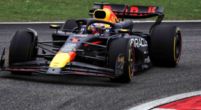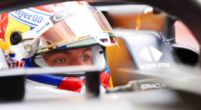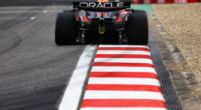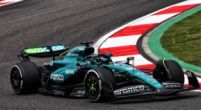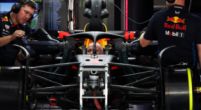Dario Franchitti drives Clark's Lotus 25, the car that propelled Clark to his first title
F1 News

GPBlog's Top 50 drivers in 50 days - #3 - Jim Clark
We have finally reached the top three of GPblog's Top 50 Formula 1 drivers of all-time, with the Australian Grand Prix planned for Sunday, although that's looking unlikely now! Nevertheless, the countdown will continue. At four yesterday was Lewis Hamilton, but in at three today is the highest placed Briton on the list, Jim Clark.
Clark had control of a car like nobody else. He could jump in any machine, learn how to drive it and then be the fastest in it. He was a shy character, not one to take advantage of his fame and power. A quiet maestro, if you will.
Clark raced his entire career with the legendary Lotus team, making the jump to F1 for the 1960 season, making six appearances and finishing on the podium in Portugal.
His Lotus drive was made permanent for 1961 and he showed good speed and collected podiums in the Netherlands and France, only finishing behind teammate Innes Ireland in the championship after Ireland took victory at the final round.
1962 was Clark’s breakout year. He took two early season victories in Belgium and Britain and trailed the BRM of Graham Hill but just a single point following the race at Aintree.
Whilst Clark won in the USA, Hill took the chequered flag in three other races to bag his first title and Clark had to settle for second.
The following year was all Clark however. Lotus provided him with a quick and reliable car, the famous Lotus 25.
He finished down the order at the season-opening race in Monaco but then took victories in Belgium, Holland, France and Britain to take control of the championship race.
Further wins in Italy, Mexico and South Africa saw him finish the season with maximum points available, as only six results counted towards the championship and Clark took seven wins.
The Scot was back in championship contention the following season, winning three of the first five races to lead the title race at the mid part of the season.
Reliability put his title challenge into doubt, but he was still in contention at the final race in Mexico. Battling Hill and John Surtees for the title, Clark led almost the entire race and was set to take the title before an oil line problem in the closing stages saw him drop to fifth, allowing Surtees to take the title.
1965 was another Clark masterclass though. He missed the race in Monaco but won the first six races he attended, taking another maximum points finish and a second world title.
Reliability once again hampered Clark in 1966, finishing only three races and winning just once. He took four wins the following season, more than anybody else, but five retirements saw him miss out on a third crown by ten points to Denny Hulme.
Clark was determined to finally get the better of the reliability issues he had been facing and in 1968 he started the season perfectly, taking pole and victory in South Africa.
It wasn’t to be though, as Clark was tragically killed in a crash during an F2 race at Hockenheim. The cause of the crash was never discovered, although plenty believe it was a deflating tyre, as Clark would never had made such a mistake in the car.
Clark achievements in F1 certainly don’t match his talents. To only have won two titles with that natural ability is such a shame. Have a look at his wins. Indy 500, three Tasman Series, multiple Formula Two races, touring car championship, P3 at Le Mans 24 Hours.
Clark was a man who could win in any car, a true natural at the wheel and some would say the most talented driver there ever was. With statistics talked about so much these days.
He won 50% of the races he entered and left a huge hole in the sport following his death. Clark truly deserves his name to be among the greats of F1, and it will stay there forever.








